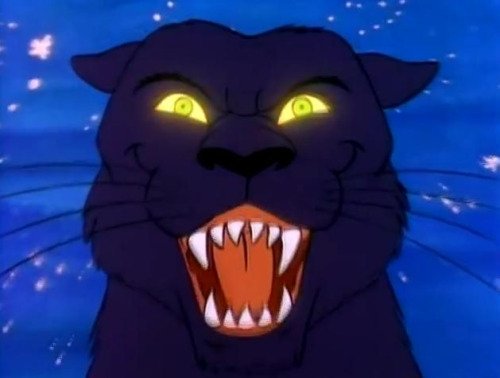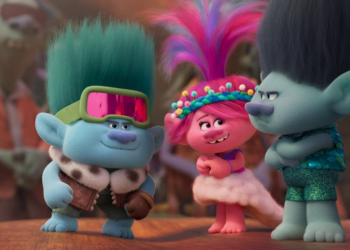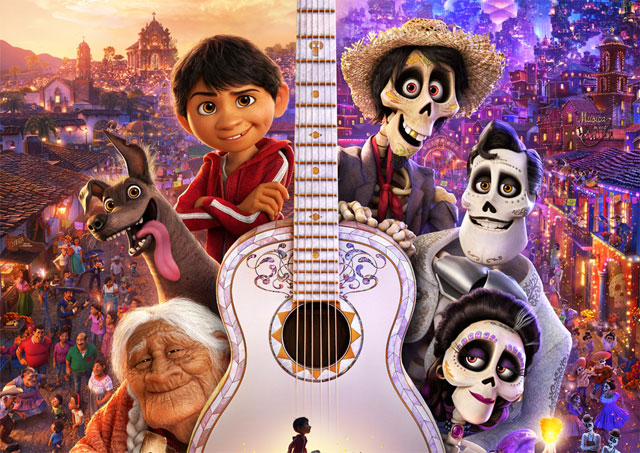Every reader has what one might call their “foundation books.” These are the texts that led those readers to discover the joy of the printed page. Being a self-styled serious reader, I too have those volumes that led me to my passion for reading: The Hardy Boys, Encyclopedia Brown, Goosebumps, Stephen King…
…and Garfield.

If you’re a child of the ’90s, you probably remember the Scholastic Book Fair. For the uninformed, here’s all you need to know: the Book Fair was a traveling book sale, touring elementary and middle schools throughout the USA. Once or twice a school year, the Scholastic semi-truck would pull up in front of your school and the roustabouts would install sets of temporary shelves in your library. Then, for three or four glorious days, you could buy all kinds of wondrous things: boy-band posters, novelty erasers, dime-store toys, and – of course – books.
It was at the Book Fair that I bought my copy of Garfield Loses His Feet. This book not only introduced me to the joys of comic strips, but it was also my proper introduction to Garfield. I had seen the orange cat before, but he had been a figurehead, a drawing meant to hock merchandise. With Garfield Loses His Feet, however, I got my first taste of Jim Davis’s strip: the sarcastic humor, the vividly drawn characters, the irreverence. I fell in love immediately!
I read Garfield Loses His Feet to pieces, along with my copy of Garfield: Bigger And Better (his 30th book, and the most recent during those years). I was hooked!

However, as great as the Garfield comic strips are, the cat came into his own with animation. Garfield has been animated in many forms, but the most revered is probably the TV series Garfield And Friends, which ran from 1988 to 1995 (and forever in syndication). Garfield and Friends is well-loved for good reason: it’s brilliant! Over the course of its eight years, Film Roman – the animation studio behind the show – showed that the strips were tailor-made for animation. Using deft hands, the animators took the zany atmosphere and physical humor of the strips and used animation to accentuate them, creating a show that hasn’t lost any of its comedy with age.
Of course, Film Roman had already become skilled at adapting Garfield’s adventures. They had already produced the TV specials!
Here Comes Garfield

After the first Garfield anthology – Garfield At Large – topped the New York Times bestseller list, Jim Davis was visited by Bill Melendez and Lee Mendelson, the team responsible for the successful Peanuts specials. When Melendez and Mendelson expressed their interest in producing a Garfield special, Davis signed on quickly. The M&M team handed the project to their third partner, director Phil Roman, and they were off to the races!
Jim Davis wanted to make certain that Here Comes Garfield turned out as well as the Peanuts specials. To this end, Davis took a hands-on approach to the story and animation processes, scripting the special and animating several key scenes.
Along the way, Davis was assisted by his friend and mentor (and Peanuts creator) Charles Schulz, who made a suggestion that altered how Garfield would be depicted. Schulz happened to be in the studio on the day that Davis was animating Garfield’s dance number. Up until this point, Garfield had always been drawn on all fours, but Davis was finding a four-footed dance difficult to animate. Schulz took a look at the drawings and gave two pieces of advice: (1) make Garfield’s feet bigger; and (2) have him stand on two feet. Davis took those two bits of wisdom and put them to use – and still does to this day!
Here Comes Garfield made its debut on October 25, 1982. CBS, unsure of the special’s commercial viability, paired it with It’s The Great Pumpkin, Charlie Brown, hoping that audiences would stick around. CBS execs needn’t have worried. Here Comes Garfield gained very respectable numbers, with 50 million people tuning in for the show.
So, did Here Comes Garfield deserve its success? Well… yeah!
That being said, I must say that Here Comes Garfield doesn’t stand out much. The plot – a prison break story reworked as an escape from the pound – feels like something we’ve seen a dozen times. The animation, too, is serviceable; it’s a little less rough than it is in the Peanuts specials, but it’s obvious that the special was produced on a shoestring budget. Some of the character designs are sloppy and there are moments where the animation looks rushed. However, those flaws don’t hurt the film to the point that it’s unwatchable.
Here Comes Garfield‘s biggest stand-out quality is probably the music, composed and performed by Lou Rawls (best known for his ’70s hits “Lady Love” and “You’ll Never Find (Another Love Like Mine)”). The songs give the special a funky, hip tone different from any other animated special!
And then there’s Lorenzo Music, who provided Garfield’s voice for the special and every other Garfield-related show until his death in 2001. Music had already built an impressive resume of voice work, but he didn’t become famous until he started voicing Garfield. It’s easy to see why Garfield became Music’s calling card; it’s a perfect marriage of voice and character! Music’s easygoing, Bill Murray-esque drawl helps solidify Garfield’s lazy nature, creating an indelible image in the mind of animation lovers everywhere.

Sadly, the success of Here Comes Garfield didn’t keep the Melendez-Mendelson-Roman partnership together. Not long after the release of the second Garfield special, Garfield On The Town (1983), the three teammates decided to go their separate ways. Bill Melendez requested the rights to make additional Garfield specials, citing his experience directing the early Peanuts specials. However, Jim Davis and Charles Schulz sat down together and decided it wouldn’t be right for Melendez to own both of TV’s big comic-strip properties. Instead, Davis sold the TV rights to Phil Roman and his new company, Film Roman Productions.
Garfield In The Rough
Film Roman’s first Garfield production was the 1984 special Garfield In The Rough. In this special, Garfield, Jon, and Odie decide to get away from their colorless lives with a camping trip. They head to a nearby lake and set up their home base, including lots of physical comedy. Their trip is dampened, however, when a killer panther escapes from a zoo and starts prowling the area. Jon foolishly decides not to cut the camping trip short, a decision he regrets when the panther discovers the campsite. It’s up to Garfield to overcome his fear and save Jon and Odie!

Of the three specials we’re discussing here, Garfield In The Rough is my favorite! It may sound funny to say about a Garfield special, but I say that both as a horror lover and an animation addict. I love the Garfield specials for respecting their audience, understanding that viewers of all ages can enjoy a good scare. This is most prevalent in Garfield’s Halloween Adventure, but that attitude can also be seen in the way Garfield In The Rough treats the panther. Take another look at the picture above this paragraph. You KNOW that thing will be haunting your nightmares for the next couple weeks, don’t you?
The special has more to offer than scares, though. Garfield‘s biggest strength has always been zany comedy, and Jim Davis used animation to take that comedy one step further. Once he did, it became abundantly clear that Davis was a comic genius! Garfield In The Rough is a delightful showcase for that talent, particularly the sequence where Jon tries to set up his tent. Garfield also indulges in a few fantasy sequences that are quite funny!
That’s not to say that Garfield In The Rough is without fault; those fantasy sequences, while funny, do nothing to push the plot forward. However, that’s literally the only fault I can recall. Garfield In The Rough is one of the best TV specials I’ve seen!
Garfield: His 9 Lives

That brings us to Garfield: His 9 Lives!
Jim Davis was a busy guy in 1984. Along with working on daily Garfield comic strips and Garfield In The Rough, he also wrote and drew a graphic novel titled Garfield: His 9 Lives. The book told the story of each of Garfield’s nine lives, taking on a new artistic style and tone with each section. The book takes readers from Garfield’s early days as a cavecat through a psychedelic Garden Of Eden allegory, Garfield’s life as a film-noir detective, his time as a Krazy Kat stuntman, his life in ancient Egypt, and through Garfield’s experiences as a starship commander. The graphic novel was a big seller!
Garfield: His 9 Lives also caught the eye of Phil Roman, who decided to transform the book into a hour-long special. Aware that doing the graphic novel justice would require all of his resources, Roman mobilized an extra-large number of troops, including eight directors. Together, the team would combine ten stories, seven different art styles, and revolutionary special effects into one of the most memorable specials ever released!

Phil Roman and his crew decided to get creative with the comics, excising stories and doing heavy rewriting. Garfield’s ‘noir detective’ life was shelved (later to be adapted as Garfield’s Babes And Bullets) and discarding stories about Vikings, the Three Stooges, and rabid animals. When the dust settled, these ten stories emerged:
- “In The Beginning” – God supervises the creation of the first cat.
- “Cave Cat” – The first cat crawls out of the primordial ooze, learns to hunt, meets cavemen, and is crushed by a giant prehistoric dog.
- “King Cat” – Since cats were worshiped as gods then, Garfield gets to lounge around, eat grapes, and enjoy the company of his none-too-bright pharaoh master. However, the cat must also protect the pharaoh from the murderous schemes of the pharaoh’s evil brother.
- “In The Garden” – Garfield hangs out in a psychedelic Garden of Eden-like place with a young girl. When the pair are commanded not to open a crystal box, the two battle with their curiosity.
- “Court Musician” – When young composer “Freddie” Handel receives a royal command to compose a concerto, he turns to Garfield to help break his writer’s block.
- “Stunt Cat” – Garfield becomes a stunt double for George Harriman’s comic-strip character Krazy Kat. Unfortunately, his stint doesn’t last long…
- “Diana’s Piano” – Garfield inspires his next owner – the Diana of the title – to compose music by expressing her (yes, “her”) appreciation for the songs.
- “Lab Animal” – Garfield escapes from a laboratory after being injected with an experimental drug. He evades his pursuers, but he undergoes a strange metamorphosis…
- “Garfield” – We watch as Garfield is born into his current life, is bought by Jon, and makes friends with Odie.
- “Space Cat” – Garfield looks ahead to his future life as his starship-commander self is attacked by aliens.
Garfield: His 9 Lives is worth watching for the technical achievement alone. Over the course of the special, the stories take on an array of animation styles, including watercolors, psychedelia, UPA postmodernism, Don Bluth stylings, pencil sketches, and standard Garfield & Friends animation. Such mixtures of style might have been jarring, but the styles are in sync with the tone of each of Garfield’s lives. This makes it easy to accept the variety of visuals!

Sadly, Garfield: His 9 Lives has some major faults. You see, the biggest hurdle any anthology film must clear is that of consistency. With multiple stories, it’s hard for the audience to get invested in characters or become involved in any story. These troubles can be overcome if the stories have a similar tone. Unfortunately, Garfield: His 9 Lives jerks between comedy, drama, sci-fi, and psychedelia so quickly that it leads to mental whiplash. This badly hurts the film.
However, as I said, Garfield: His 9 Lives is worth seeing for the technical marvel. It’s worth seeking out!

These three specials are only the tip of the iceberg when it comes to Garfield’s television career. Along with Garfield & Friends, Film Roman produced Garfield specials for every major holiday on the calendar, along with scads of other specials. However, the three we’ve discussed represent Film Roman’s creativity, bravery, and pioneer spirit, going where TV animation had never gone before. If you’re looking get into Garfield animation, these three shows are a great place to start!
As for Garfield himself… what can I say? As I said at the beginning of this article, Garfield holds a nostalgic place in my heart. I’m not being very objective, but I personally feel that Jim Davis has given us an awesome gift with the Garfield comic strips, and the animated shows have only added to the luster. I’ll be grateful forever!
What about you? What do you think of the Garfield specials? What would you like to see unearthed from The Attic of Animation? Sound off in the comments!
Edited by: Morgan Stradling






